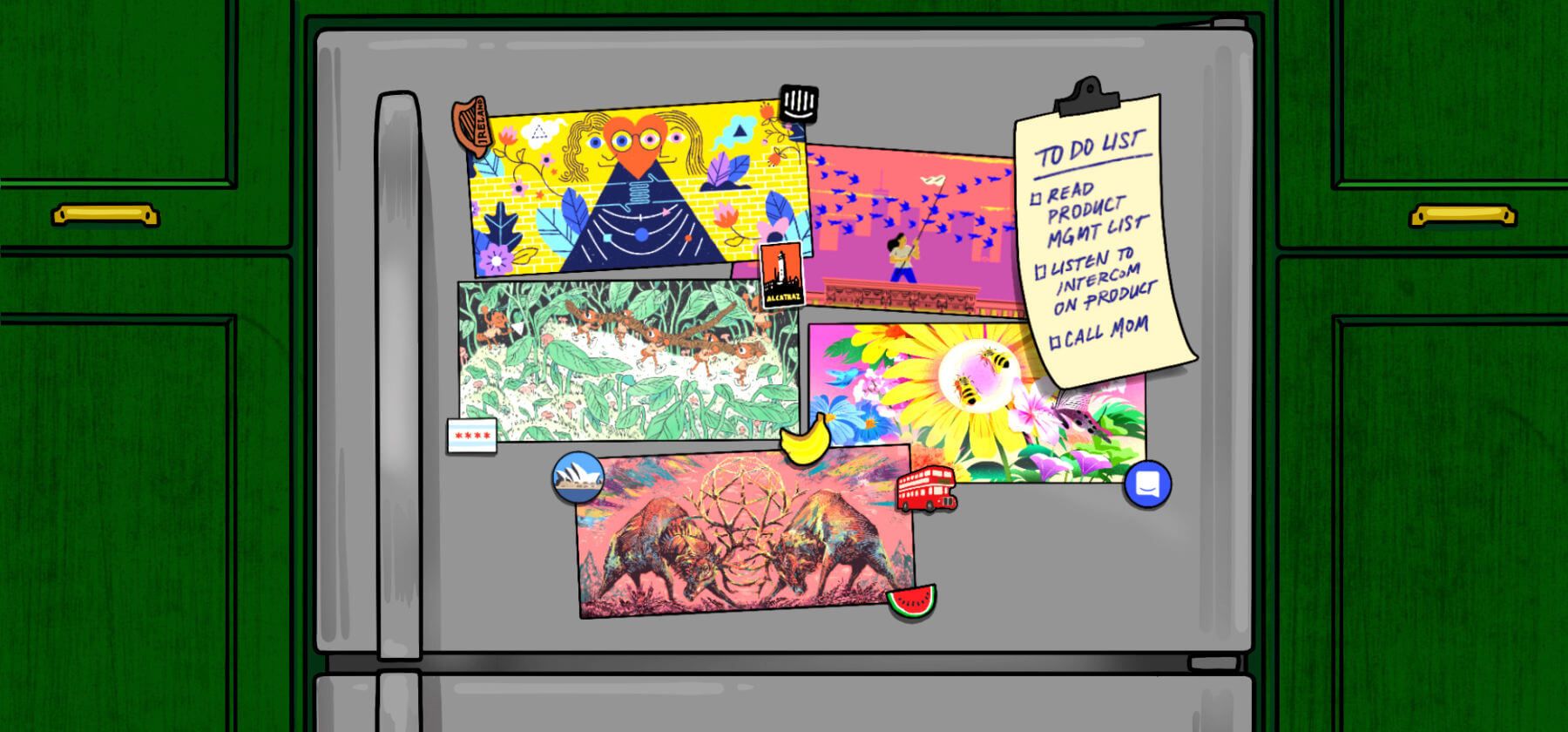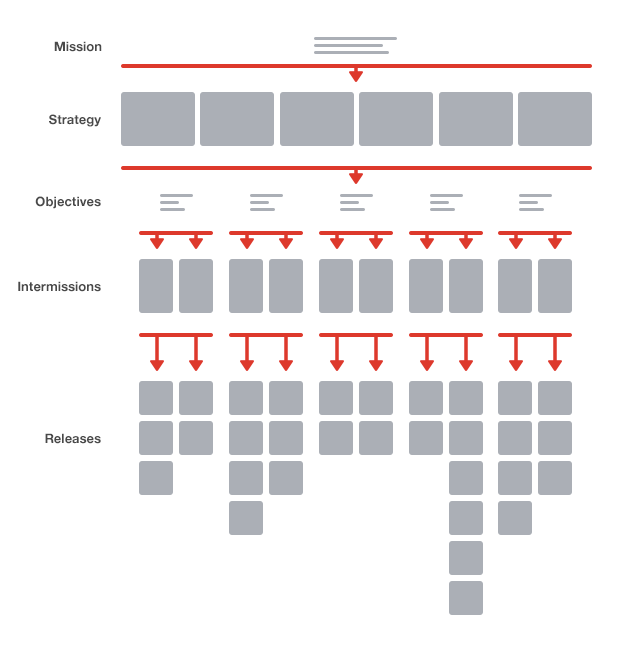
Reading list: Analyzing great product teams
Main illustration: Susan Payne
As a product-led company, we have put great thought, time, and energy into how we organize our product teams.
After all, excellent design and engineering can only come from product teams that are empowered to solve hard problems and build great software. In our model, product teams effectively own a piece of the product, and consist of a Product Manager, Designer, and a few Product Engineers.
“We have written a lot about the alchemy of great product teams, the ingredients that make them succeed, the flaws that can make them fail, and the characteristics that differentiate the merely good from the genuinely great”
Over the years we have written a lot about the alchemy of great product teams, the ingredients that make them succeed, the flaws that can make them fail, and the characteristics that differentiate the merely good from the genuinely great.
In this latest Reading List, we collect some of the most popular and insightful pieces we have published on the topic over the years, covering everything from achieving alignment to encouraging tension, from cultivating empathy to fostering reflection. We hope you find it informative.
Lessons learned from scaling a product team
This in-depth essay by our SVP of Product, Paul Adams, explains the processes we use to build product, and details how product teams operate. What’s fascinating is that even though the post is five years old now and a lot of our thinking has evolved, it demonstrates how many of our ideas around product teams have endured, despite our rapid growth since then.

Key takeaway:
“Product building teams have natural grey areas and collaboration often means a better end result. So people within teams work this out themselves. But when it comes to analyzing what we spent our precious time building, the lines of accountability need to be very clear.”
Alignment on great product teams
This fascinating talk by one of our Principal Engineers, Eoin Nolan, dives into the ideal balance on a high-performing product team between the three disciplines of strategy, design, and engineering. Core to that balance is a diversity of skill sets and vision on the team working in alignment.
Key takeaway:
“At Intercom, we structure our product teams to try and capture each of these dimensions. Typically, a product manager will take on team strategy, a designer will take on UX and ensuring that the whole system fits together, and engineers will build, run and maintain our systems. But, we all work together in unison to try and make this product.”
Laura Klein on improving chemistry in product teams
As an engineer, UX designer, product manager, and startup advisor for more than 20 years, VP of Product at the Business Talent Group Laura Klein has seen it all, and written the books to prove it: UX for Lean Startups and Build Better Products. Two years ago, she joined us on our podcast to reveal why assembling a great product team is like pulling off a heist.
Key takeaway:
“Think about your favorite heist team: You have the leader who’s getting the gang back together for the one last job, after which they’re all going to retire to the beach. They always put together a team of specialists and experts, and it’s a team that is comfortable working together often, sometimes after some fighting. But usually by the time they’re ready for the heist, there’s a lot of trust there.”
Why messiness is a good thing for product teams
“The best laid schemes o’ mice an’ men / Gang aft a-gley,” as the 18th-century Scottish poet Robert Burns put it. Indeed, you don’t need too much experience on a product team to have painful experience of how even the best plans often go awry.
In this counterintuitive argument, Senior Product Manager Brian Donohue says we should embrace the mess – it’s not just unavoidable, but actually necessary. If harnessed correctly, the mess of building product can be a real benefit.

Key takeaway:
“If you’re shooting for something that’s really great, remember that creativity is inherently chaotic and uncertain. You have to expect it to be that way. You can contain this mess with your pillars – the foundation of your mission and vision, the principles of how you work – but fight the gravitational pull towards order. Because if it’s not messy, and you’re convinced you know exactly what you’re doing, you’re probably on the road to irrelevance.”
Healthy tension in product teams
In this reflection on the qualities of excellent product teams, our Senior Director of Product Design, Emmet Connolly, invokes Buckminster Fuller’s famous geodesic dome, which boasts exceptional structural tensional integrity – ”Simply by arranging the struts in the correct relation to each other, something much stronger and bigger than its individual parts can be created.” The geodesic dome, Emmet suggests, is a powerful metaphor for high-performing product teams, which are marked by a creative tension between the different disciplines.

Key takeaway:
“Teams are relationships, and without a little pressure and willingness to push one another to do better, excellence can be an early casualty of collaboration. A team that’s unwilling to hold one another to a high standard will quickly see that standard slip.”
Building empathy in a product team
This talk by our former Senior Product Researcher, Sinead Cochrane, details the importance of cultivating user empathy among product teams, in order to stay dialled in to the needs of their customers. The best way to do that is to bring PMs, designers and engineers closer to the research process.
Key takeaway:
“Observing research is often perceived as a distraction from doing real work like coding or designing. However, as a researcher I’ve seen first-hand the positive impact of giving engineers an opportunity to listen to customers describe how they work, and observe them using the actual products the engineers are building.”
Reflection: a key ingredient to great product teams
We learn by doing, as Principal Product Designer Gustavs Cirulis points out in this thoughtful essay. But to become more effective, we need to make time to reflect on how you’re “doing.” At Intercom, Gustavs writes, this reflection happens at an individual, team, and company level.

Key takeaway:
“It’s tempting to stop reflecting when pressure is high and time is low. Yet that’s the most impactful time to do it. Reflecting on how you work will increase your performance by allowing you to focus on the right things and improve how you collaborate with your team.”
Product managers should not build the roadmap. The product team should
In the classic product team structure, responsibility for the roadmap belongs to the product manager. But it shouldn’t necessarily be that way, suggests former Intercom Product Manager Ulaize Hernandez Troyas – instead high-functioning product teams should have a collective ownership of the roadmap, leading to better outcomes.
“We have reduced friction between teammates, which has saved us from long-winded conversations that stemmed from misunderstandings”
Key takeaway:
“This type of ongoing communication throughout the prioritization process has a definite cost, but the number of benefits from this approach is worth it. We have reduced friction between teammates, which has saved us from long-winded conversations that stemmed from misunderstandings. The sense of ownership and purpose has increased the team’s motivation. On a more personal level, having these open product discussions has challenged my own thinking many times over, which has definitely improved our product direction as a result.”
If you found this useful or have other topics you’d like to see us cover in the Reading List series you can give us feedback through the Messenger on this page.
Read more posts in the Reading List series here.








